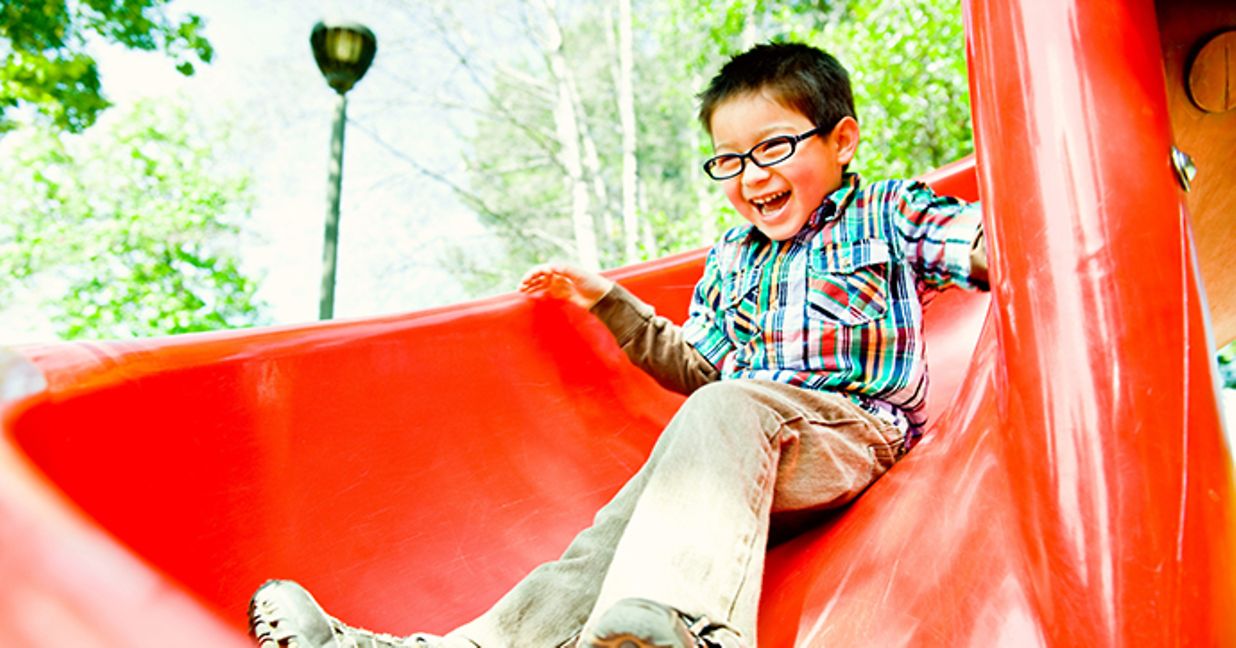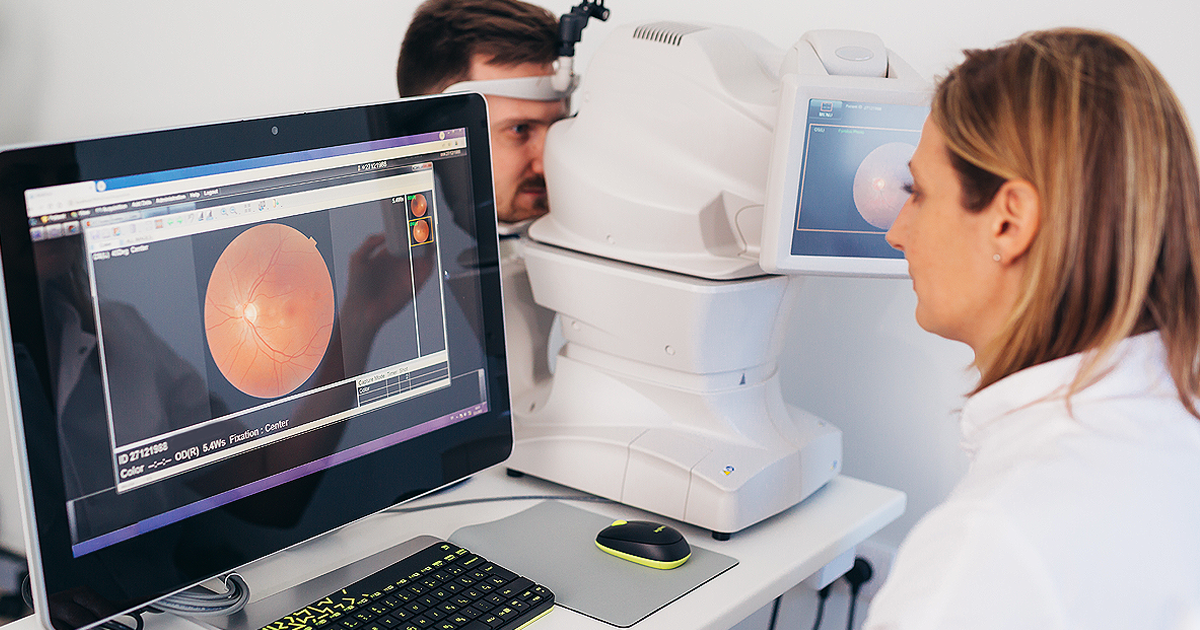You might not think the textbook definition of epidemic (“an outbreak of disease that spreads quickly and affects many individuals at the same time”) applies to myopia, but it’s a fact: More people have myopia – nearsightedness – than in the past, and the rate of new myopia cases is accelerating.(1)
Myopia is a condition where visual images come to a focus in front of the retina, making it harder to discern distant objects. With this condition, the cornea is too steep in curvature, or the eye grows too long, and can result in eyestrain and headaches, in addition to difficulties in seeing things far away.
An issue for little ones
With children, myopia can worsen over time and increase their risk of more serious vision problems in adulthood, according to Thomas Aller, OD, FBCLA, a prominent authority on the disease.(2)
Myopia affects more than just how a child sees. Uncorrected refractive errors like myopia in infants and preschool-age children are associated with developmental delay concerns, as well as with clinically identified cognitive and visual-motor function deficits that may affect school readiness,(3) according to the Children’s Vision and Eye Health report by Prevent Blindness.
As kids grow, their chance for myopia increases. Recent numbers from the Prevent Blindness report show that in the U.S., 4% of children 6 to 72 months of age have myopia, while 9% of 5-to-17-year-olds have the condition.(4) According to the National Eye Institute(5), about 42% of Americans ages 12-54 are nearsighted, up from 25% in 1971(6). These numbers demonstrate exactly why myopia is now considered an epidemic.
What can we do about the myopia “epidemic?”
As vision conditions go, myopia is generally correctable (through glasses, contact lenses or LASIK surgery), and it may even be treatable with eye drops containing low doses of a compound called atropine(7) and specific contact lens applications.
But there appears to be another way to slow the onset and lower the incidence of myopia: Good old fashioned active play time in the sunshine! Research shows that time spent outside can help prevent the onset of myopia(8), though researchers aren’t exactly sure why. It could be that young eyes benefit from a general preference for sunlight, the presence of visual cues or the lack of tasks requiring close work (9) .Whatever the reason, in some studies, children who played outdoors frequently had a lower incidence of myopia than those who spent more time indoors.
You know what else can help? Vision benefits. According to the World Health Organization, access to correction for myopia is “essential to avoid vision impairment,” and “all people with myopia should have access to appropriate, accurate refractive correction.”(10)
Vision benefits encourage parents to get kids’ eyes examined at an early age. Early and regular comprehensive eye exams can help detect signs of myopia. Also, getting kids with early-onset myopia into an optometrist-directed treatment plan – whether it involves vision correction or just spending more time outside – gives kids a great chance of reducing the effects of myopia before they affect schoolwork or other activities.
Vision benefits help everyone to see more clearly, but they may have their greatest impact on young eyes. Download our free Value of Vision whitepaper to learn more about how vision benefits can pay big dividends for everyone’s vision, including kids.
EyeMed is always looking ahead at what’s next in vision care. Keeping tabs on trends in myopia is just one way we’re looking out for members’ eyes.
BL-1805-CB-502
1: The World Health Organization, The Impact of Myopia and High Myopia,” accessed April 11, 2018 http://www.who.int/blindness/causes/MyopiaReportforWeb.pdf
2: Myopia Management, accessed April 11, 2018 at http://b3c.1ca.myftpupload.com/all-about-myopia/key-facts/
3: https://www.preventblindness.org/content/prevalence-and-impact-vision-disorders-us-children
4: https://www.preventblindness.org/content/prevalence-and-impact-vision-disorders-us-children
5: "Facts About Myopia,” accessed April 6, 2018, at https://nei.nih.gov/health/errors/myopia
6: Vitale, S et al. 2009. Increased prevalence of myopia in the United States between 1971-1972 and 1999-2004. Arch Ophthalmol 127(12): 1632-1639.
7: Tay, Su Ann, Sonal Farzavandi, and Donald Tan. Interventions to Reduce Myopia Progression in Children. Strabismus 25.1 (2017): 23-32.77.
8: Rose KA, Morgan IG, Ip J, Ki ey A, Huynh S, Smith W et al. Outdoor activity reduces the prevalence of myopia in children. Ophthalmology. 2008;115:1279–85.
9: "Facts About Myopia.” accessed April 6, 2018, at https://nei.nih.gov/health/errors/myopia
10: The World Health Organization, The Impact of Myopia and High Myopia,” accessed April 11, 2018 http://www.who.int/blindness/causes/MyopiaReportforWeb.pdf



